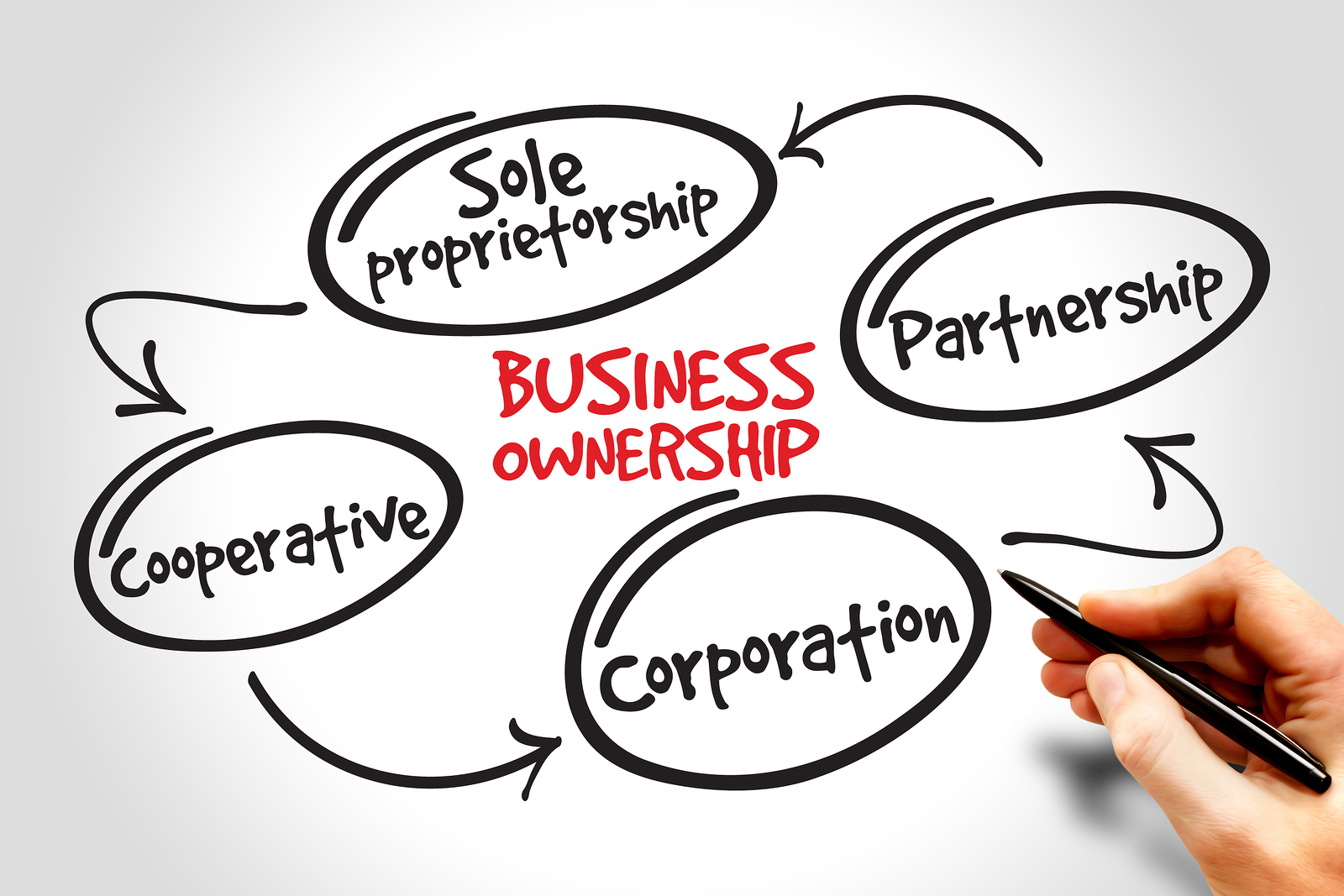 When it comes to entity selection, there really isn’t a general “rule of thumb”. Most business owners consult their attorney to determine which entity is appropriate, but in many cases, they’re making a big mistake if they don’t seek counsel from their tax team before choosing their entity.
When it comes to entity selection, there really isn’t a general “rule of thumb”. Most business owners consult their attorney to determine which entity is appropriate, but in many cases, they’re making a big mistake if they don’t seek counsel from their tax team before choosing their entity.
But you know that. Let’s talk about something you may not know. And that’s how to answer the entity question when it’s posed by small business owners. Often laden with misconceptions and advice they’ve picked up from misinformed friends, generic YouTube videos or attorneys that aren’t on top of the tax laws, these people are often unknowingly walking straight into a disaster zone. That’s why they desperately need you.
Entity choice can make a big difference. Business and/or personal liability protections are provided by some entities, but, not all of them. In addition, there can be significant tax differences depending on the entity and type of business venture at stake.
Every day we talk with people that are attempting to choose their entity prior to outlining their roadmap to profitability. It’s a big mistake. BIG. That’s why I always, always tell people they need to create a solid business plan before they select an entity.
Once they’ve got their business plan ready to roll, we dig into entity discussions. Here’s how I break the entity discussion down for them:
Sole Proprietorships:
- taxes are handled on the personal tax return of the owner
- the net profit of the business (revenues less allowable business expenses) is taxed at income tax rates and subject to self-employment taxes (payroll taxes).
- the IRS really likes to audit active sole proprietorships making over $100,000. This category of business is one of the most heavily audited groups.
| Pros | Cons |
| Easy and low cost to set up | No liability protection |
| Minimal cost to maintain | Income and self-employment taxes on 100% of profit |
| Higher audit risk |
The best candidates for this type of entity are small startup businesses with low liability exposure looking to reduce the costs of startup and administration. Many businesses start this way and later find they have outgrown this structure. It leaves them exposed to liability, higher taxes and audit risk. We often recommend moving away from this structure once the business is more established and profitable. These recommendations usually come with the added benefit of big tax savings.
Partnerships:
- General partnerships have no liability protection and all partners are liable for each partner’s actions. Creditors usually target the strongest partner. In addition, creditors may pursue partners individually for liabilities. If a partner was targeted alone, that partner would need to pursue his other partners to share in any business liability.
- Partnerships file an annual tax return on Form 1065. Partnerships file tax returns but do not pay income tax. The income is passed through to the partners. Each partner is issued a schedule K-1 that reports their share of income or loss, basis in the business, and allocation of partnership debt. The partner then records these items on their personal tax return and pays the taxes individually.
- General partners in active businesses are subject to self-employment taxes on 100% of the active income from the partnership. See the discussion about self-employment taxes provided under sole proprietorships. The effect is basically the same.
- Basis is another item to look out for related to partnership taxes. Basis is the investment each partner has in the business. It is comprised of cash or asset contributions, prior earnings retained in the business and each partner’s share of partnership-incurred debt. To deduct partnership losses on the partner’s personal tax return, there must be sufficient basis. If basis has been reduced to zero, the loss is generally disallowed and carries forward into a year that either has income, additional partner contributions or additional partnership debt.
- Unlike other entities, certain partnership debt is considered as basis. For this reason, partnerships are used extensively to hold leveraged real estate (real estate bought with borrowed money). That being the case, tax losses generated by real estate may be deductible if the total tax loss exceeds partner investments.
| Pros | Cons |
| Initially, fairly easy to create | Requires separate tax filing |
| Debt can be used as basis | General partnership, unlimited liability |
| Limited partnership, limited liability | Self-employment taxes on active interests |
| Ownership transfers can be troublesome | |
| Losses limited to basis |
The best candidates for the partnership structure are real estate investment businesses who want either limited partnership liability protections and/or the use of debt basis to allow losses.
It’s important to keep in mind that partnerships are often terminated if ownership or control of the entity is transferred too quickly. So, continuity of the business could be compromised with this structure.
C Corporations:
- Established under state law, C Corporations file an annual tax return on Form 1120. They are a separate legal entity from their owners and should be treated as such.
- Corporate existence can continue virtually indefinitely. Ownership is not restricted and individuals, LLCs, partnerships, trusts, etc, can own corporations. Corporations are common among large businesses that need to attract several investors. In addition, corporations are the structure of choice by non-US persons who may be restricted from owning other types of entities.
- Corporations provide for limited liability. Generally, corporation creditors cannot get past the corporate shield to get to the personal assets of the owners or shareholders. All assets owned by the corporation would be lost to the creditors, but no personal assets could be touched.
- Corporate taxation is a bit more complicated. Corporations file tax returns and pay tax on the corporate profits. Most states also have a state-level corporate income tax that must be filed and paid. Dividends issued to the owners, which are not deductible by the corporation, are also taxed when the recipients file. double taxation is one reason many accountants do not recommend C corps, but there are many many benefits. Are you missing out on these by fearing double taxation?
- Current corporate tax rates range from 15% to 39%. If you are working with a taxpayer paying more than 15% in tax, are you missing an opportunity?
- C Corporations are the best type of entity for providing fringe benefits that are easily deducted. For example, health insurance, long-term care insurance, and medical expenses may be deducted. I recommend a C Corporation in cases where medical expenses are high or when it can be used in combination with a multiple entity structure.
| Pros | Cons |
| Anyone can own shares | Cost to create and maintain |
| Limited liability | Requires separate tax filing |
| Continuity of interest | Double taxation |
| Deductibility of fringe benefits | May require payroll for owners |
| No reduced capital gains rate |
The best candidates for this type of entity would be larger organizations looking to raise capital in the financial markets. Smaller organizations may use this type of structure as part of a multiple entity strategy to maximize fringe benefits. Also, small organizations with high-fringe benefit costs might use this structure in some instances. Lastly, foreigners wanting to invest in U.S. properties or investments often use this structure.
S Corps:
- S Corporations have several important ownership restrictions. First, the maximum number of S Corporation shareholders is 100. Second, only US persons can be shareholders. Third, you actually have to elect to be treated as an S Corporation, and there are deadlines for this election. There are a handful of revenue rulings outlining how to fix late filings, but if you want to be an S Corporation it is best to apply immediately. Typically, LLCs, most trusts, partnerships, corporations, and other S corporations are excluded as owners of an S Corporation.
- S Corporations file their own tax returns on Form 1120S, but much like a partnership, they are pass through entities that issue a schedule K-1 to the owners and the owners report the income on their own returns and pay the tax personally.
- One major difference between the taxation of S Corporations and partnerships is with the definition of basis. While partnerships include the debt of the partnership in basis, S Corporations do not. Only amounts loaned by the S Corporation shareholder to the entity are considered basis. Loans from third parties, banks, etc., are not. The deductibility of losses works much the same way, so an individual must have enough basis available or the loss is not allowed.
- Unlike C Corporations, S Corporations pass through the income to the owners. So the owners would get the reduced capital gains treatment on any capital transaction.
- Another major benefit of the S Corporation is that corporate profits and distributions to the owners of the corporate profits are not subject to self-employment taxes. This is a big benefit and the biggest reason that S Corporations are so popular. There is a catch here, however. And it’s one that is often overlooked. The IRS requires that the S Corporation pay the owners a reasonable salary.
- Salary is, of course, subject to payroll taxes. The trick here is to determine what portion of the profits should be paid as reasonable salary subject to the payroll taxes and what portion can be paid as a distribution of corporate profits that are free from payroll taxes. Either way, the income taxes will remain roughly the same.
| Pros | Cons |
| Limited liability | Costs to create and maintain |
| Continuity of interest | Requires separate tax filing |
| No double taxation | Requires payroll and payroll returns |
| Possible reduction of self-employment taxes | Ownership restrictions |
The best candidate for this structure is a small, closely held, profitable, active business that can benefit from the allocation of profits to salary and corporate distributions.
Still, think “what entity should I be” can be answered with limited details and quickly? It takes careful consideration, planning, projecting, and looking at many circumstances in each unique taxpayer’s life. And that’s something your clients need to know when they pose this to you as a “quick question.”
Remember, your work and your expertise is valuable. When you value yourself enough to charge for it, other people will value you, too.




